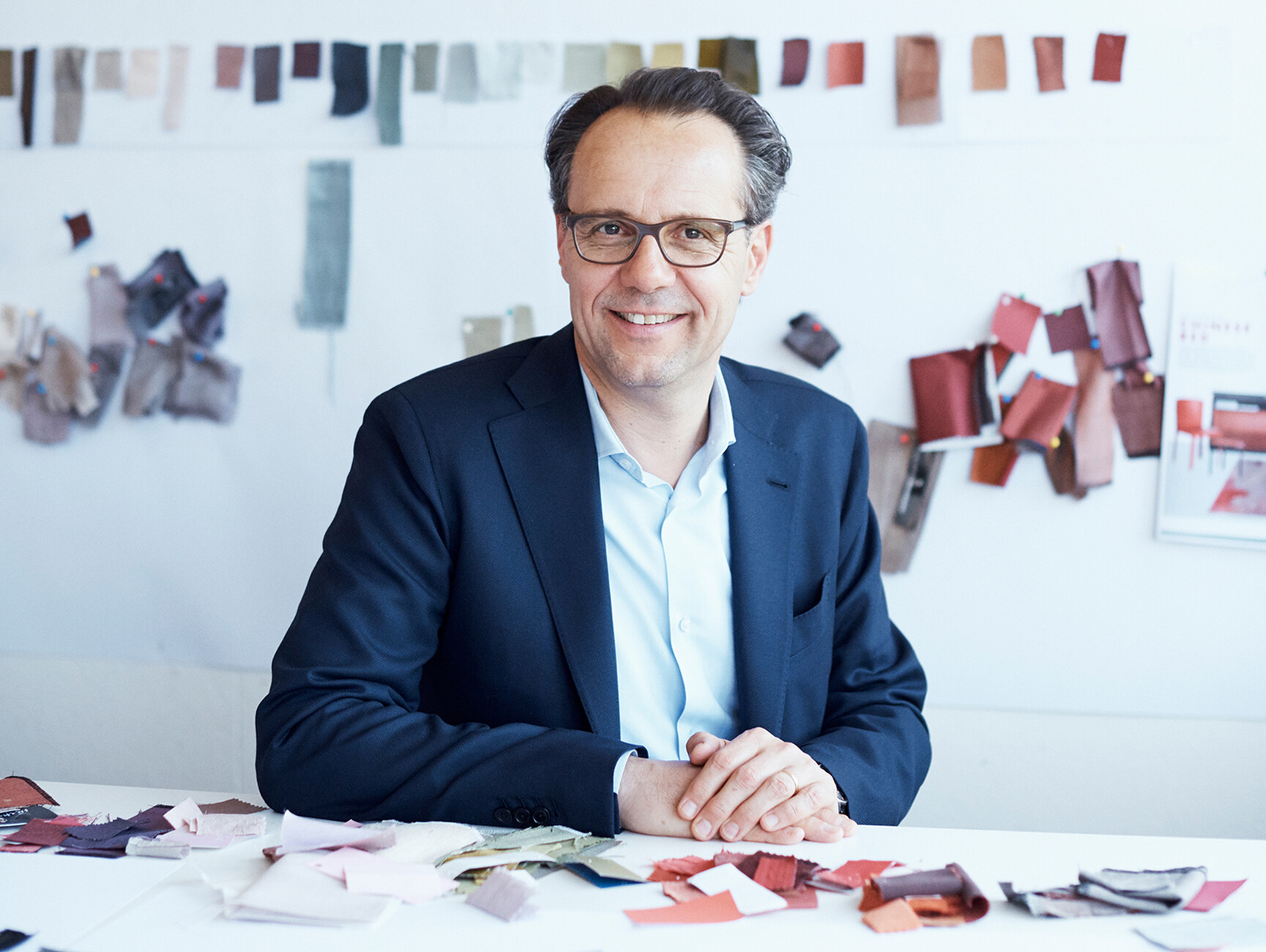Sustainable sound insulation
In the context of Designers’ Saturday in Langenthal, we had the opportunity to take a look behind the scenes of Swiss textile company Création Baumann – textile designer Eliane Ernst opened the in-house design studio especially on the occasion. The creative team is currently focusing on the development of acoustic textiles: “Acoustic materials are extremely important in today’s rooms,” says Eliane Ernst. A fabric can filter out up to 60 percent of irritating sounds in a room – and thus make a decisive contribution to staff’s concentration levels and well-being. “For the development of the fabrics, we took a very close look at building physics,” the designer explains, pointing to the results determined for each fabric in the echo chamber according to ISO/EN standards. Thus the “Acoustic Divider Vario,” for example, reduces sounds by up to 16 decibels and functions as an additional partition. The sound insulating and sound absorbing effect is achieved through numerous layers of textiles and a so-called noise silencer, a molleton with a special film that has been inserted between the layers of fabric.
With a view to the acoustic challenges of open-plan offices, Création Baumann is relying ever more on the development of micro-architectures. “We increasingly want to advise architects within a building,” says Eliane Ernst. “In coming years architects and interior designers will increasingly focus on sound-absorption using functional textiles,” added Philippe Baumann, CEO and owner of Création Baumann. With over 90 acoustic fabrics in over 2,000 colors and different transparencies, the long-established company already offers a diverse selection. When it comes to sustainability too, Création Baumann is a step ahead of the competition: The yarns the company uses are manufactured in Germany and Italy and are certified by Ökotex. Even the waste water from the dyeing plant is mixed with the exhaust gases from the steam boiler and thus neutralised in order to avoid the use of chemicals.














